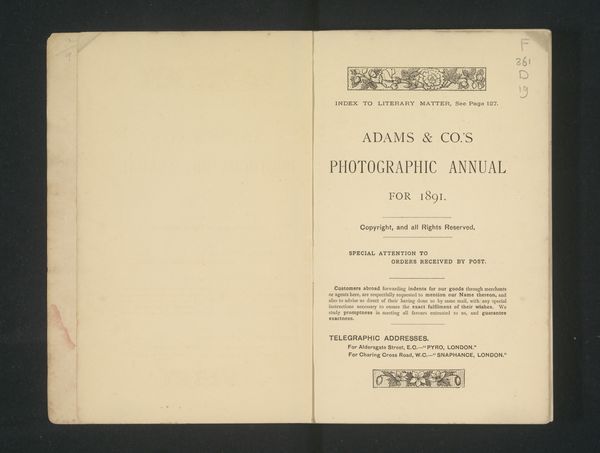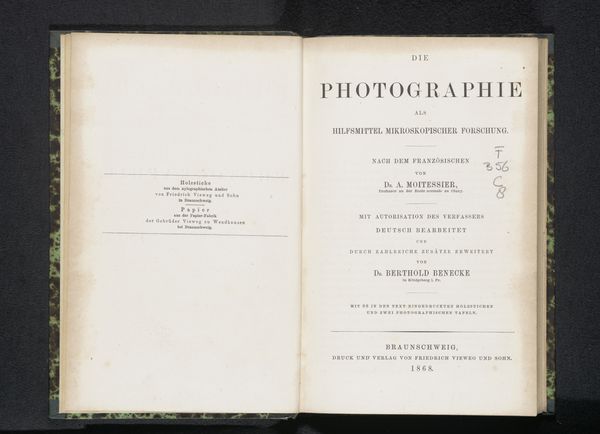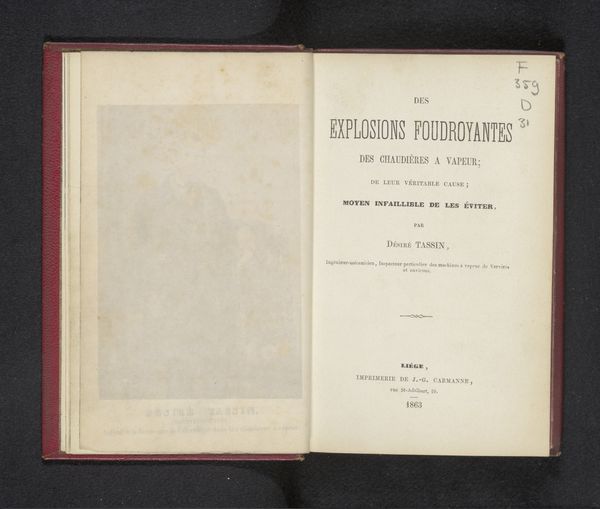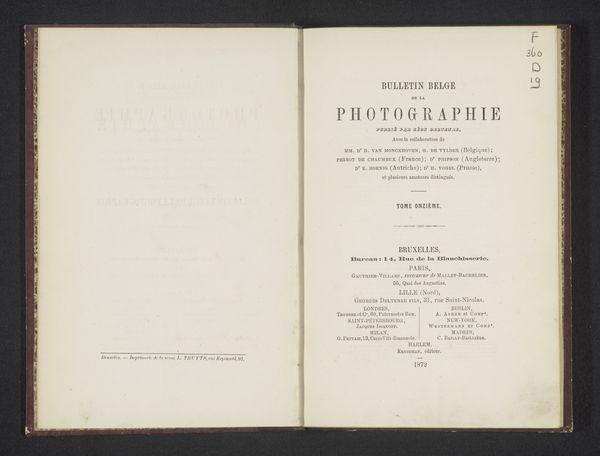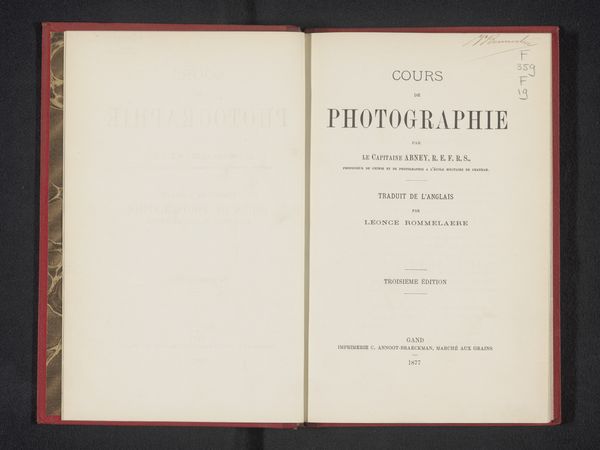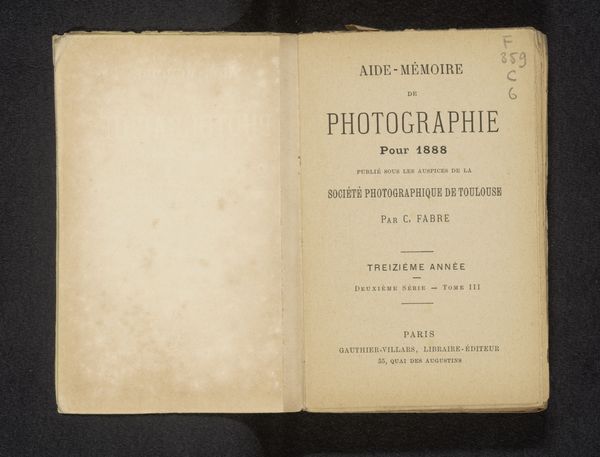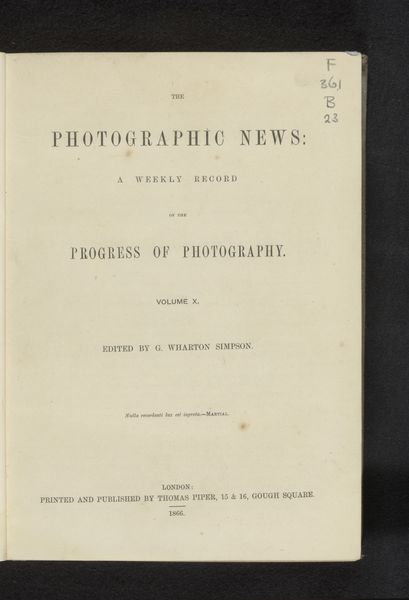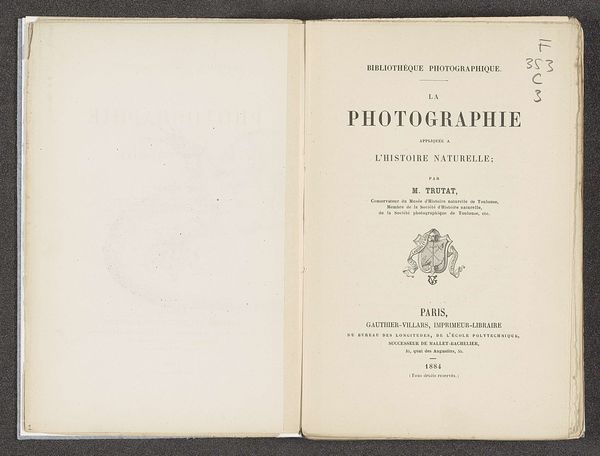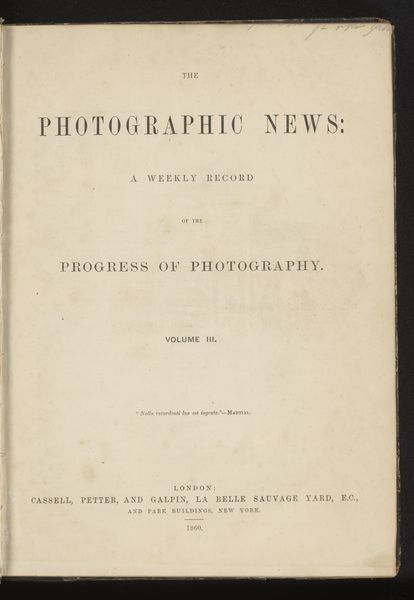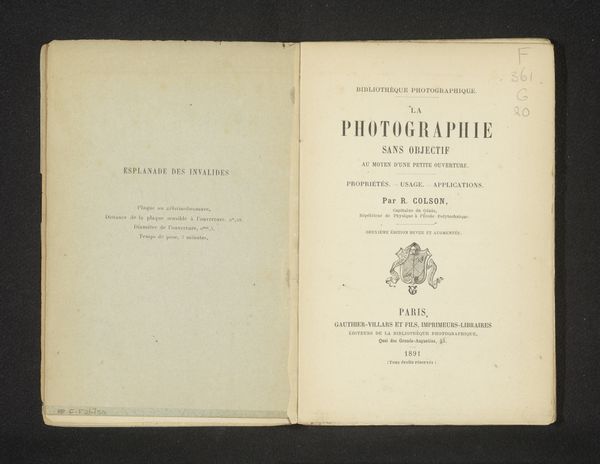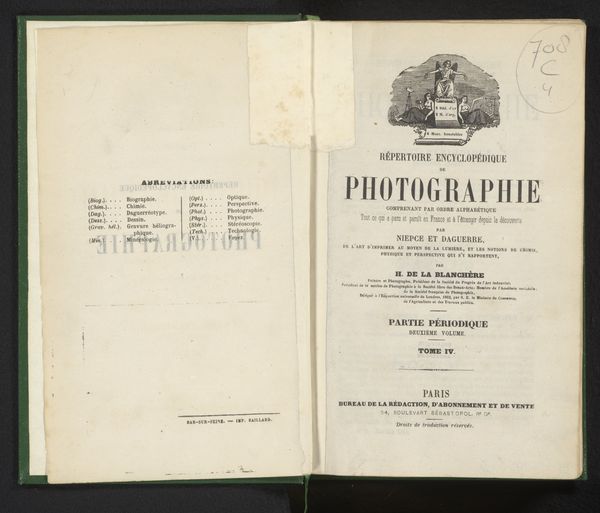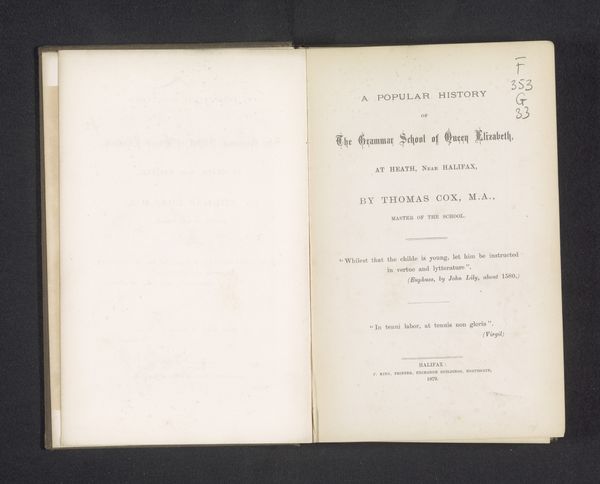
print, paper, photography
# print
#
book
#
paper
#
photography
Dimensions: height 150 mm, width 100 mm, thickness 17 mm
Copyright: Rijks Museum: Open Domain
Editor: So, here we have "The Story of Photography," a book from 1899 by Alfred T. Story. It’s a surprisingly compact little volume. I am curious – it looks like it was part of a series called 'The Library of Useful Stories.' How should we interpret that context today? Curator: That's a keen observation. Think about the ambition embedded in that title. What does "useful" suggest about the era's values? In 1899, photography was still relatively new to most people, laden with mystery. What purpose does simplifying its narrative serve? Consider that the target audience craved digestible knowledge, aligning with Victorian-era ideals of self-improvement through readily available knowledge. What visual language tells a "useful" story to a reader in the late 19th Century? Editor: I guess making information accessible through such a book aimed to demystify photography, turning it from a complicated process into a concept anyone could grasp. I wonder if that accessible, democratizing effect helped shape photography's early adoption by a wider public. Curator: Precisely. The book served as a symbolic bridge. Now consider its materiality, its physical size. How might holding such an object shaped one's relationship to photography, not just as a practice, but as a form of visual storytelling and representation of self? Think about its portability – the intimacy created through personal ownership versus public displays of photographs. Editor: So the physical form, almost like a primer, normalized and made photography more tangible for people? It really brings out the intent of democratizing knowledge. Curator: Precisely. It transformed what might have been seen as complex or even magical into everyday knowledge and shaped cultural memory for generations to come. Hopefully, understanding the images within helps you think about context!
Comments
No comments
Be the first to comment and join the conversation on the ultimate creative platform.
